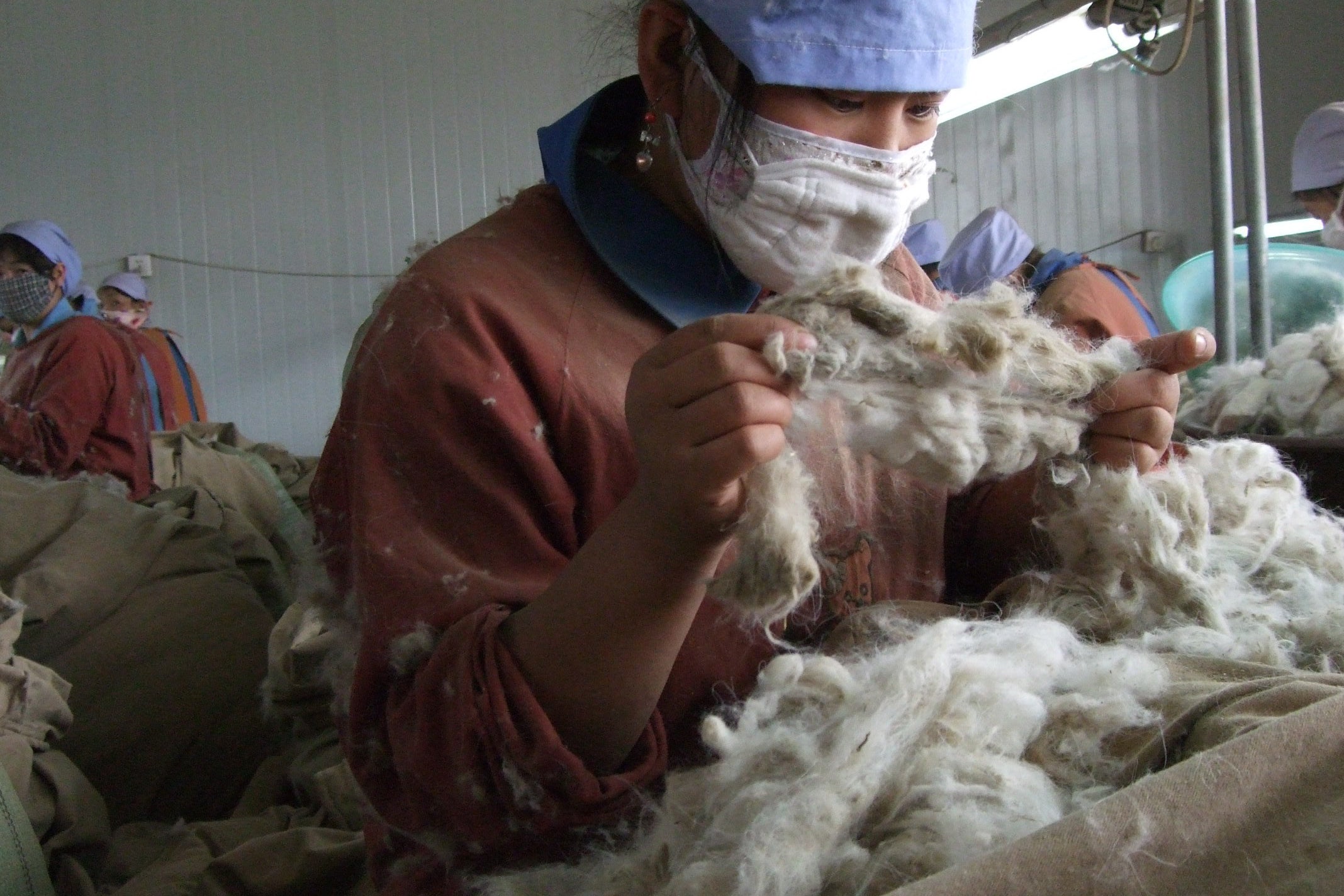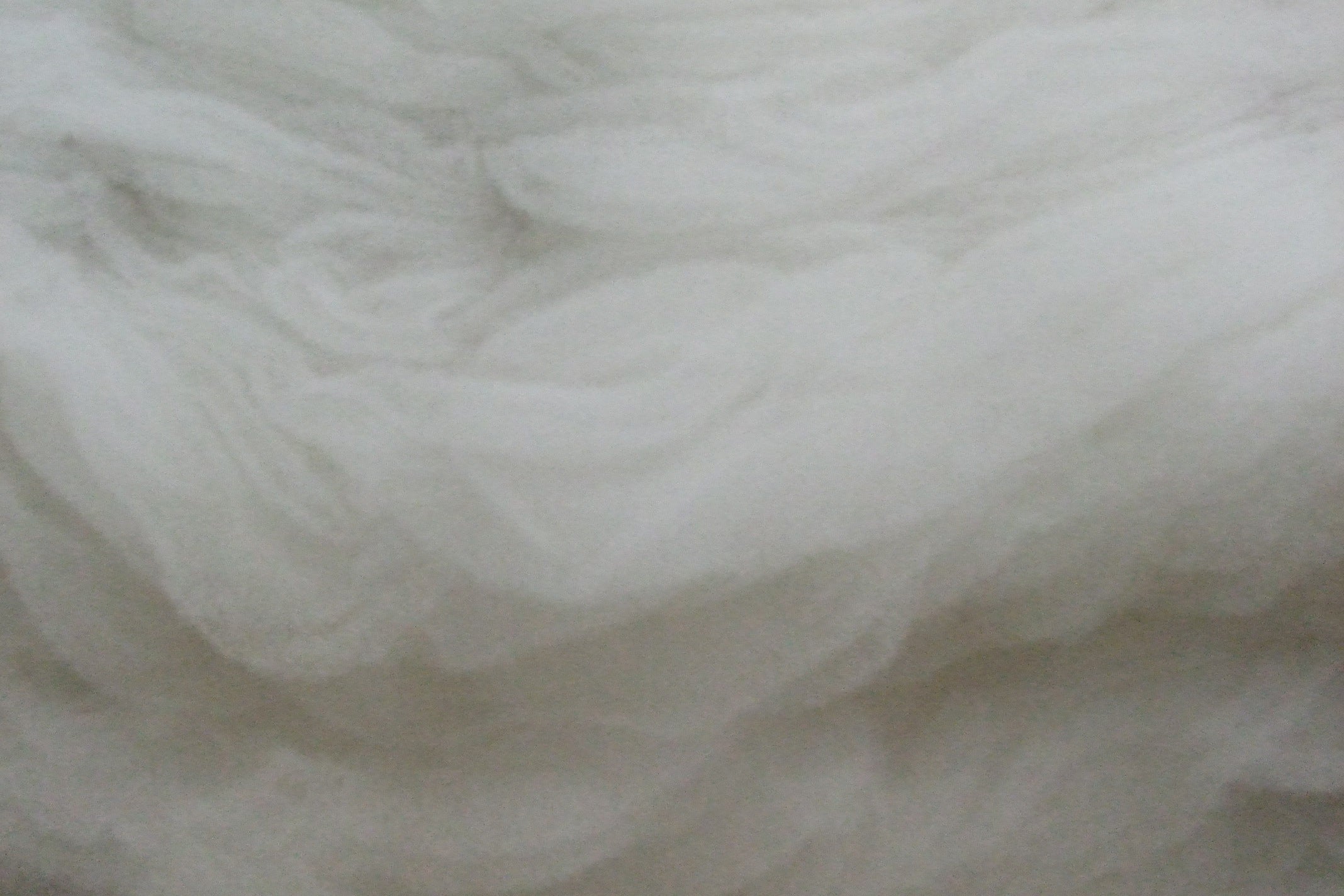En lavant des cheveux en cachemire, l'eau boueuse et brunâtre se transforme progressivement en coton d'un blanc pur.

Lavage des cheveux en cachemire
L'eau boueuse et brunâtre se transforme peu à peu en coton blanc pur.
Le cachemire sélectionné est ensuite lavé.
En entrant dans la pièce où l'on lave le cachemire, j'ai été frappée par l'humidité et l'odeur animale. Le cachemire a été placé dans une machine à laver d'environ 50 mètres de long et lavé à plusieurs reprises. Au début, l'eau était brunâtre et trouble, mais au fur et à mesure des lavages, elle est devenue limpide, et le cachemire, une fois lavé et séché, était d'un blanc pur. Cependant, à ce stade, le duvet du cachemire restait invisible, masqué par les poils.
Seimou (mise en forme).
Le processus le plus complexe, propre au cachemire.
Dans le cas des laines autres que le cachemire, comme la laine de mouton, de chameau et d'alpaga, la laine brute est filée et transformée en fil telle quelle après la récolte. En revanche, le cachemire est un mélange de poils durs (appelés « poils piquants ») et de poils duveteux (appelés « poils duveteux ») présents dans la laine brute récoltée.
Pour obtenir un cachemire doux et moelleux, il suffit d'éliminer le duvet. Le processus de séparation du duvet des cheveux emmêlés et d'élimination exclusive du duvet est appelé préparation du duvet.
Le dégarnissage est l'étape la plus importante de la fabrication du ouate de cachemire, car il minimise la casse et l'endommagement des fibres et élimine complètement les poils irritants. Ce procédé est techniquement complexe, et l'on peut affirmer sans exagérer que la qualité de la matière première dépend de la technique employée pour préparer le dégarnissage.
La couleur, l'épaisseur et la longueur des fibres sont les critères de qualité les plus importants pour la laine brute de cachemire. Les poils duveteux du cachemire sont naturellement longs, mais ils sont raccourcis par la casse des fibres lors du processus de préparation. On peut donc dire que la qualité dépend de la technique utilisée pour éviter cette casse.
Les soies retirées sont utilisées comme fourrage dans les champs et à d'autres fins.
Lors du façonnage du cachemire, il est essentiel de maintenir un taux d'humidité entre 67 et 68 %, car une laine trop sèche fragilise les fibres et les rend cassantes. Le travail est aisé en hiver, mais très exigeant physiquement en été, avec la chaleur et l'humidité.
Jusque dans les années 1970 environ, les entreprises de filature japonaises importaient la laine d'argile et réalisaient l'ensemble du processus en interne, du tri et du lavage à l'étape suivante du conditionnement.
Aujourd'hui, la Chine n'exporte plus la laine brute afin de maintenir l'emploi local et de valoriser le processus de tri, de lavage et de conditionnement de la laine. Ainsi, lorsque nous parlons de cachemire, nous parlons de matières premières destinées au conditionnement du cachemire.
Les filatures du monde entier achètent désormais les matières premières en Chine pour la préparation de la laine, un processus qui n'existe plus au Japon ni en Europe aujourd'hui.







